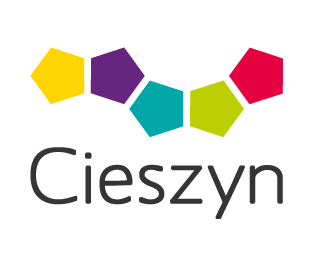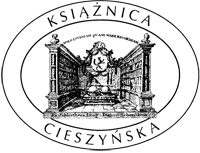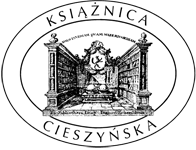The establishment of Cieszyn Library meant that we had to devise and implement a number of solutions which would organize the activities of the newly-founded library. Of course, it also included a method of cataloguing our collection.
Resources available in Cieszyn Library include a few historic book collections:
– the book collection of Leopold J. Szersznik (1747-1814);
– the book collection of Józef Ignacy Kraszewski (1812-1887);
– the book collection of the People’s Library in Cieszyn (1848/1861-1922);
– the book collection of the Ethnological Society in Cieszyn (1901-1939);
– the archives of the Ethnological Society;
– the book collection of Tadeusz Reger (1872-1938);
– the so-called Reger Files;
– the former Museum book collection;
– the book collection made up of remnants of historic book collections;
– the book collection of the Historic Branch of the City Library in Cieszyn.
Cieszyn Library was endowed not only with the richness of its book collections, but also with the burden of their complicated history. Individual historic book collections were not catalogued uniformly, there were many call mark systems and inventory ledgers were not detailed enough and did not live up to contemporary standards in library classification. Initial activities undertaken by Cieszyn Library led to the creation of numerous documents which detailed the guidelines for formal classification of book collections, as well as the rules of gathering and cataloguing them. The foundation for these documents was an analysis of applicable legal regulations, standards and solutions implemented in research libraries, consultations with experts in bibliographic studies and experienced librarians and discussions held by the members of the Programme Board of Cieszyn Library.
The idea of cataloguing all the resources of Cieszyn Library was based on the assumption that the structure of the collection and the search system should provide optimal conditions for using the resources of Cieszyn Library in bibliographic and regional research. We also wanted to standardize the scope and type of information taken into account when we catalogue individual categories of library materials, regardless of their form and location in the Library.
We decided to divide the whole book collection of our Library into smaller units using the formal criterion. We disregarded the provenance of books, which used to be taken into account in the past (the only exception is the collection of L. J. Szersznik which, due to its unique form, was preserved as a separate and unchanged entity). The collection of Cieszyn Library was divided into the following units: 1. old books (published in the years 1801-1950); 2. new books (published since 1951); 3. magazines; 4. old prints; 5. the collection of L. J. Szersznik; 6. manuscripts; 7. documents of social life; 8. iconography; 9. cartography; 10. microfilms; 11. electronic documents; 12. negatives of materials filmed in the Library; 13. non-library materials. For each of these units, we set up inventory ledgers. Every book in the collection was given a new call mark.
As a result of the Commission’s work, in 1998 a group of librarians prepared the first version of the internal standard entitled “The Structure and Rules for Recordkeeping and Cataloguing the Book Collection of Cieszyn Library”. This extensive analysis contains detailed information on the structure of the book collection, access rules, record-keeping and cataloguing specific types of materials, as well as methodological tips related to the accepted method of solving problems which had not been adequately explained in applicable standards.
In 1994, we implemented the library program MAK, which at that time only allowed us to catalogue non-serial publications and maps. However, we could also use the program to create any description types we wanted, so we took the default MARC BN format and added more fields and subfields. In accordance with our earlier assumptions, it enabled us to fully describe all the categories of library materials in our collection. As a result of these modifications, the description format used in our Library has additional fields and subfields which were necessary to catalogue formally varied library materials. It also enables us to describe and record additional elements which could be of importance in bibliographic and regional research, such as illustrations, printed dedications, descriptions of book bindings, the names of publishers, printers and regional authors, the provenance of books and their former call marks. When we introduced these changes, we made sure that we complied with all applicable standards and that all categories of library materials were described in the same way. As a result, we created one coherent format which includes fields and subfields used to describe all categories of library resources available in Cieszyn Library. Because of that, the format allows us to create databases which gather descriptions of different resource categories, which is useful when we prepare bibliographic summaries. Due to the fact that we adjusted MAK to the specific character of Cieszyn Library, we could implement automation systems at the very beginning our Library’s existence. This process happened simultaneously with describing the whole collection. We managed to automate both the cataloguing process and the printing of catalogue cards and library records. Since 1999, our catalogue has been available on our website. You can also use the website to browse through “virtual”, scanned catalogues of historic book collections. Ever since we finished cataloguing the whole collection of Cieszyn Library, these catalogues have served as an auxiliary tool which allows readers to navigate our resources.
The next stage of describing our book collection took place in the years 2007-2010 as part of the project entitled “Protection and Conservation of the Written Heritage of Cieszyn”. One of the aims of this project was to provide historic libraries in Cieszyn with complete catalogue and record documentation which would be in line with contemporary norms and to equip libraries with search systems which would make it possible not only to control the contents of library collections, but would also enable librarians to reintroduce these collections into scientific and cultural circulation.
When it comes to Cieszyn Library, it meant that we had to continue our work on describing the collection. This work started at the very beginning of the existence of our Library, back in 1994. We still needed to describe and catalogue the collection of Leopold Jan Szersznik (old and new prints, as well as manuscripts) and old prints from the collection of the People’s Library and the Deanery Library, which were deposited in Cieszyn Library in 2002. 19,162 items were described in total, including 14,375 volumes of old prints, 3,787 volumes of new prints and 1,000 manuscripts.
In January 2008, the “Zakłady Kórnickie” Foundation won the open tender for describing the collection. Pursuant to the concluded agreement and the specification of essential order conditions, the contractor agreed to describe old prints, manuscripts and 19th and 20th century books and magazines using MAK computer programme, in accordance with contemporary cataloguing standards and internal guidelines provided by Cieszyn Library. These guidelines included e.g. methodical tips related to solving problems which have not been adequately explained in applicable standards.
The work on cataloguing the collection of Cieszyn Library took almost two years, from 18 February 2008 to the end of January 2010. All descriptions made by the “Zakłady Kórnickie” Foundation were thoroughly verified. In July 2010, we finished checking the descriptions of all manuscripts. Currently, we are still checking bibliographic descriptions of old prints and 19th and 20th century magazines.
Thanks to the project, we completed one of the milestones in the process of describing the collection which has been going on since 1994: we finished cataloguing old prints and our oldest and most valuable book collection, namely L. J. Szersznik’s Library.
Apart from cataloguing and describing our own collection, we supervised cataloguing the collections of other historic libraries in Cieszyn, which were the beneficiaries of the project, namely the Cieszyn Branch of National Archives in Katowice, Protestant Parish, the Cieszyn Silesia Museum and the Monastery of Brothers Hospitallers. In 2007, these institutions implemented MAK library program and adopted uniform rules for cataloguing their collections. It opened the way for the participants not only to exchange bibliographic descriptions with each other, but also to integrate databases and share them via the Internet. The first multibrowser of historic libraries in Cieszyn was launched on the website of Cieszyn Library in May 2011.
On 1 September 2016, Cieszyn Library started a project entitled “Sharing the Written Heritage of Cieszyn Online”. It is expected to be finished by 31 March 2019. The project is co-financed by European Union funds as part of the Regional Operational Programme for Silesian Voivodeship in the years 2014-2020 (European Regional Development Fund) for priority axis 2. Digital Silesia for action: 2.1. Support for the development of digital public services (project number WND-RPSL.02.01.00-24-0262/15-003). The cost of the project is PLN 760,200 and PLN 646,170 (85%) is co-financed by European Union funds. The main aim of the project is to replace the library system used in Cieszyn Library with new software. It will allow us to incorporate our databases into the Union Catalogue of Polish Research Library Collections (NUKAT) or into the Distributed Catalogue of Polish Libraries (KARO). It would be a real breakthrough for our library. If we change the system, we will also have to change the description format which we have used up to date (we will have to replace MARC BN with MARC 21). It means that almost 150 thousand catalogue, bibliographic and factual records need to be converted and all the data must migrate to the new system.




